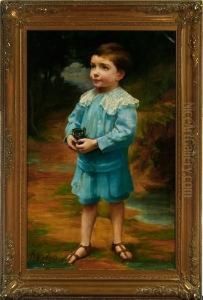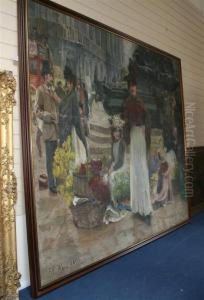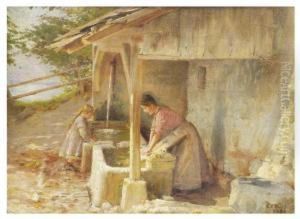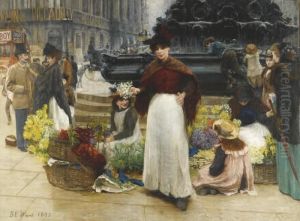Bernard Evans Ward Paintings
Bernard Evans Ward is not one of the most widely recognized names in the annals of art history, which can make information about his life and works somewhat scarce and occasionally ambiguous. Born in 1861, Ward was a British artist whose career spanned the late 19th and early 20th centuries, a period that saw significant changes in the art world with the rise of movements such as Impressionism, Post-Impressionism, and early Modernism. Despite the overshadowing fame of contemporaries in these movements, artists like Ward continued to contribute to the artistic tapestry of their time.
Ward's work primarily consisted of figurative subjects, portraits, genre scenes, and landscapes. His style was rooted in the academic artistic traditions of the period, reflecting the skills and techniques that were taught in the prominent art institutions of the day. While he may not have been a pioneer of new artistic movements, his work nevertheless embodies the period's aesthetic values and provides insight into the more traditional art practices that continued alongside the avant-garde.
Notably, Ward's paintings were exhibited at the Royal Academy of Arts in London, which was a significant accomplishment for any artist of that era. Exhibiting at the Royal Academy was a mark of recognition and respectability within the British art establishment. Despite this achievement, Ward's legacy does not seem to have had a lasting impact on future generations, and as such, his name is not as readily found in modern discussions of art history.
Bernard Evans Ward passed away in 1933, and while his work may not have garnered the same level of fame as some of his contemporaries, it remains a testament to the skills and artistic expressions of his time. Today, his pieces are likely to be found in private collections or regional museums, and they continue to be of interest to those studying the broader scope of British art history during the late Victorian and Edwardian periods.



